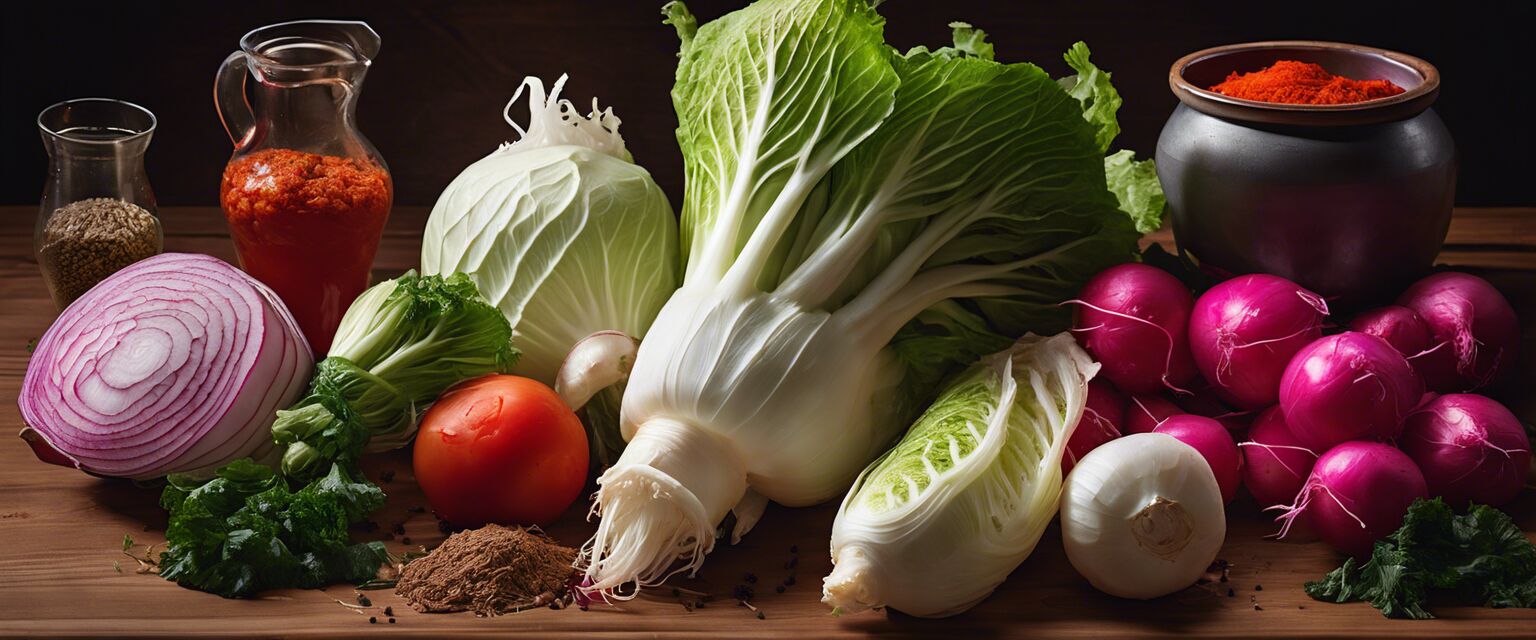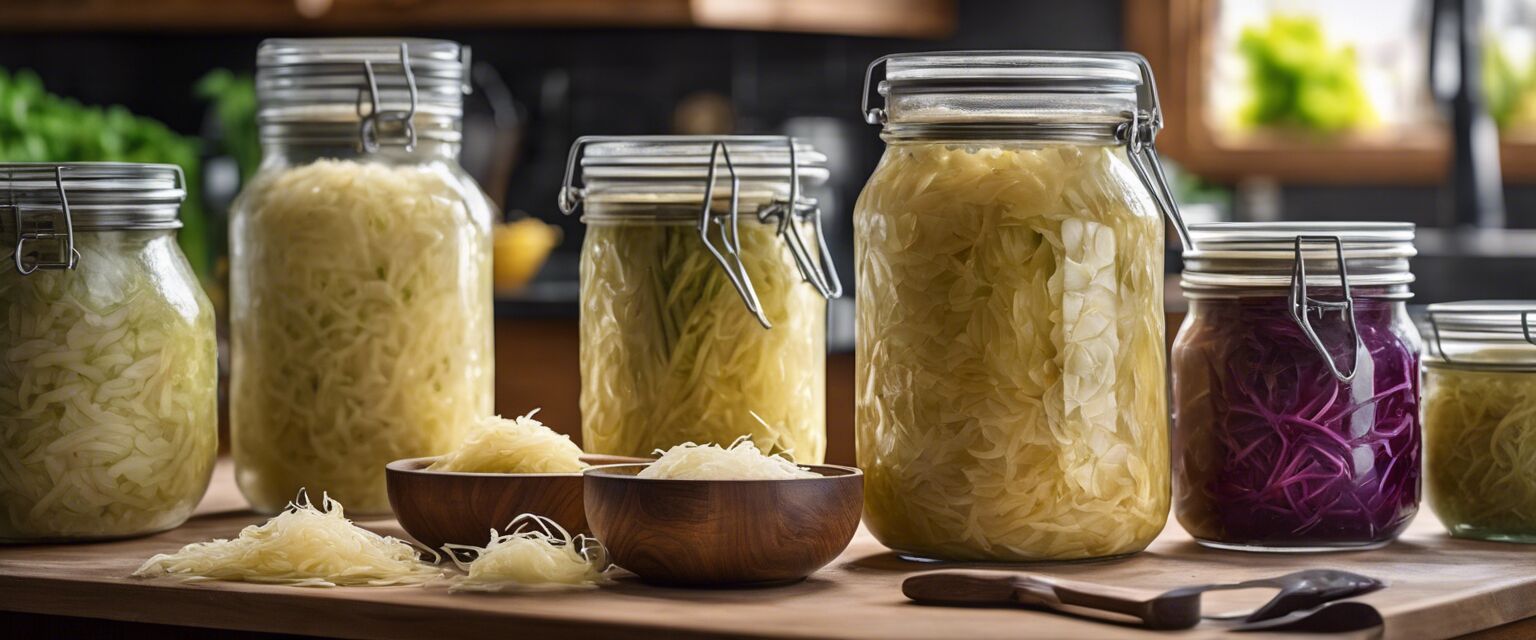
Introduction to Home Fermentation
Key Takeaways
- Home fermentation is a fun and rewarding process that enhances flavors.
- Fermented foods can be made using simple ingredients and tools.
- Benefits include improved digestion and extended food shelf life.
- Common fermented items include kimchi, sauerkraut, yogurt, and kombucha.
Home fermentation is a fascinating process that transforms ordinary ingredients into delicious, probiotics-rich foods. This comprehensive guide will delve into the basics of home fermentation, including the tools you'll need, types of foods you can ferment, and the numerous benefits associated with this ancient culinary technique.
What is home fermentation?
Home fermentation is the process of transforming food through the action of microorganisms, such as bacteria, yeasts, and molds. These microorganisms break down sugars and starches into acids, gases, and alcohol, enhancing the flavor and nutritional content of the food. Fermented foods have been consumed for centuries, and today they are making a strong comeback among health-conscious consumers.
Benefits of home fermentation
- Flavor enhancement: Fermentation adds unique tangy flavors to your food.
- Nutritional benefits: Fermented foods can provide probiotics that support gut health.
- Preservation: Fermentation naturally preserves food, extending its shelf life.
- Cost-effective: Making your own fermented foods is often cheaper than buying them pre-made.
- Creativity: Home fermentation allows you to experiment with different flavors and ingredients.
Essential tools for home fermentation
Before diving into the fermentation process, itâs important to gather the necessary tools. Here is a table to help you identify key items:
| Tool | Purpose |
|---|---|
| Fermentation Crock | For fermenting vegetables like sauerkraut and kimchi. |
| Fermentation Weights | To keep food submerged in brine during fermentation. |
| Fermentation Lids | To allow gas to escape while preventing contamination. |
| Glass Jars | For small batches of fermented foods. |
| pH Meter | To check the acidity level of your products. |
Common items to ferment
Hereâs a list of popular foods that you can ferment at home:
- Kimchi
- Sauerkraut
- Kefir
- Kombucha
- Fermented pickles
- Natto

Step-by-step fermentation process
Considering diving into home fermentation? Follow these steps for a simple fermentation project:
Fermenting vegetables (Example: Sauerkraut)
- Shred cabbage and add salt (about 2% of the weight of the cabbage).
- Knead the cabbage until it releases juice.
- Pack the cabbage tightly into a fermentation crock or jar.
- Submerge the cabbage completely under the brine, using weights if necessary.
- Seal the container with a fermentation lid and leave it at room temperature for 1-4 weeks.
- Taste periodically until the desired flavor is reached.
Key fermentation techniques
Here are some important techniques you should know:
- Salt concentration: The right amount of salt is crucial; too little can lead to spoilage, while too much can slow down fermentation.
- Temperature control: Fermenting foods in a cool, dark place is ideal to ensure proper fermentation rates.
- Tasting: Fermentation time varies, so checking the flavor as it develops is vital.
- Storage: After fermenting, store your foods in the refrigerator to slow fermentation and preserve flavors.
Storage and longevity of fermented foods
Understanding how to store your fermented creations ensures their longevity and quality. Hereâs a simple guide:
| Food Type | Storage Method | Shelf Life |
|---|---|---|
| Sauerkraut | Refrigeration | 4-6 months |
| Kimchi | Refrigeration | 6 months or longer |
| Kombucha | Refrigeration | 1-3 months |
| Kefir | Refrigeration | 1-2 weeks |

Tips for beginners
Tips for successful fermentation
- Start with small batches to gain confidence.
- Use fresh, high-quality ingredients for the best results.
- Follow recipes closely until you understand the basics.
- Don't rush the process; fermentation takes time.
- Keep a fermentation diary to track your experiments and results.
Conclusion
Home fermentation is not only a rewarding hobby but also allows you to create delicious, healthful foods right in your kitchen. With just a few essential tools and your favorite ingredients, you can explore the diverse world of fermentation. Whether youâre interested in making fermentation kits for beginners or diving into more advanced techniques, the possibilities are endless. Happy fermenting!
Pros
- Creates unique flavors
- Enhances nutritional value
- Economical and fun hobby
- Customizes flavors to your liking
Cons
- Requires time and patience
- Initial setup costs
- Risk of spoilage if not done correctly








